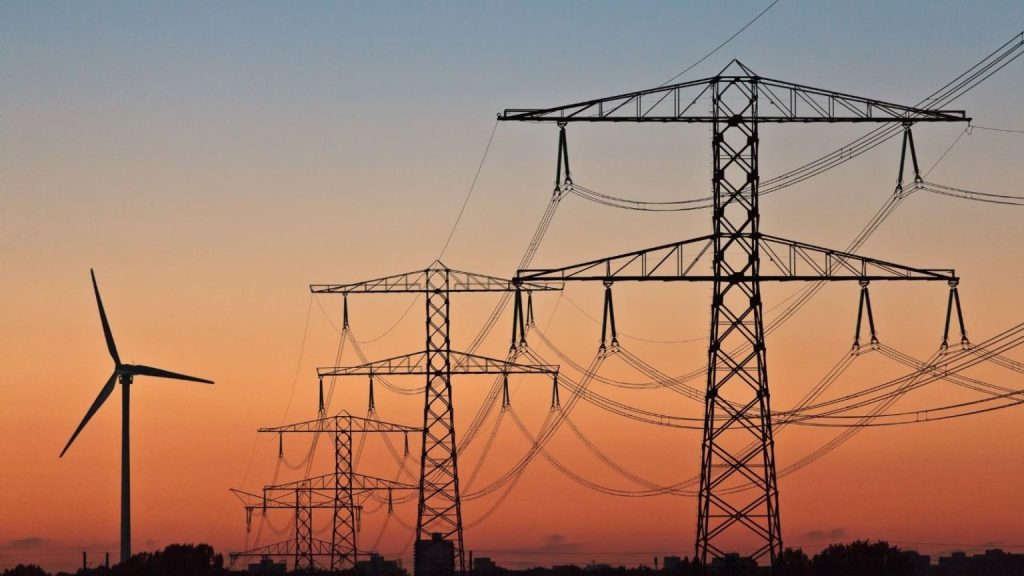
List of Students Involved in the Competition :
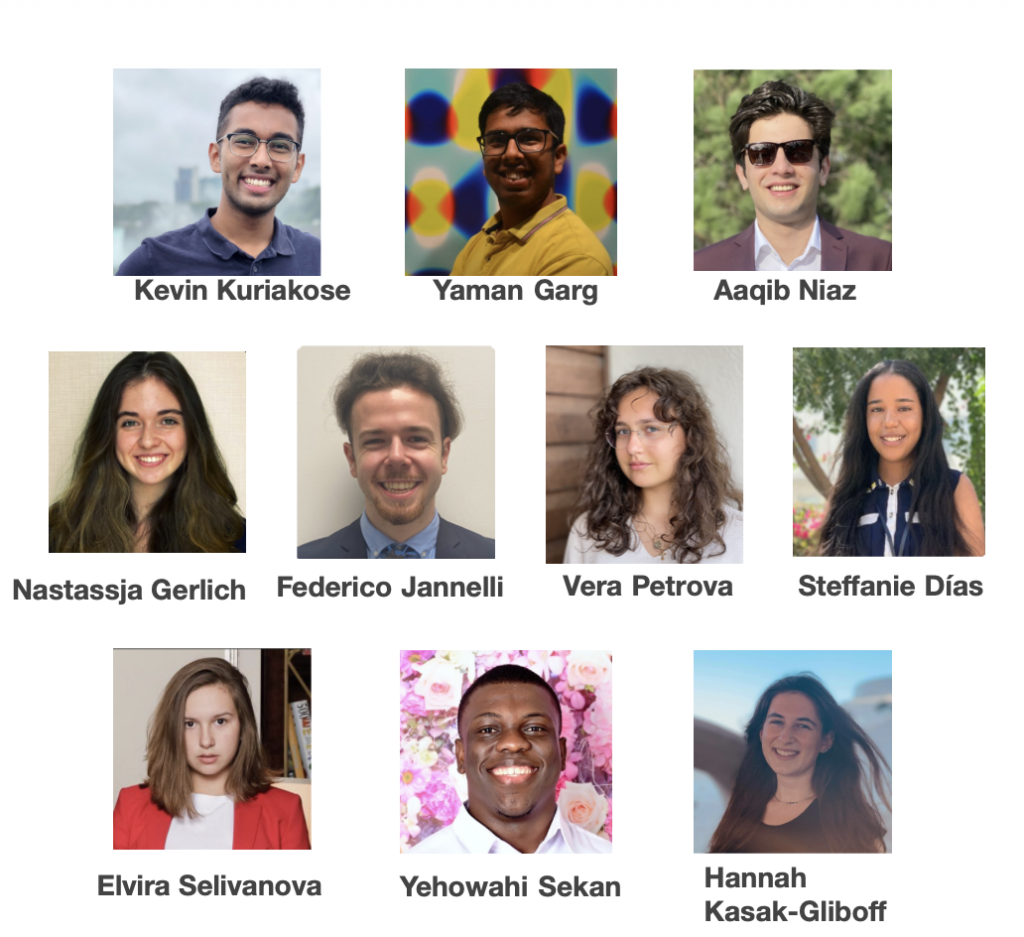
On April 8th, 2021, the NYUAD team, named Team Green Arabia, was chosen, along with nine others, to represent their universities and to present their project at the Expo 2020 Dubai. The SMECEYI organizers expect the student teams to work between June and September to deliver materials that will be used for presentation at the Expo 2020 Dubai. The materials include a summary of the project in Arabic and English, video presentations, and graphics.
The final round of the competition will reduce the number of teams to five. All teams are required to submit a report and a 3-minute pitch video on September 9th, 2021. The report and video must include details of the lessons learned during the competition and the “Swissness” of the project which is a concept that demonstrates the connections to Switzerland, such as Swiss members in the team and collaborations with Swiss universities, companies, and researchers.
NYUAD’s Team Green Arabia is a multidisciplinary team of ten students from all four NYUAD Divisions, including Arts and Humanities, Economics, Engineering, and Social Science. Two of the students are also from Switzerland. The students have been collaborating with professors from Swiss universities and consulting with Swiss industries on the technical details of their proposal.
SMECEYI has assigned an external advisor for each team, and NYUAD Team Green Arabia’s advisor is Prof. Uwe W. Schulz of the Lucerne University of Applied Sciences and Arts, Engineering and Architecture. NYUAD Team Green Arabia has been sponsored by CITIES and also has three NYUAD faculty mentors whose research (or interests) deals with sustainability, waste, and the circular economy, namely Philip Panicker (Mechanical Engineering), Daniel Johnson (Civil and Environmental Engineering), and Goffredo Puccetti (Visual Arts) who together helped to create a multidisciplinary student team.
As per the requirements of the SMECEYI competition, Team NYUAD’s project deals with all five types of waste streams, namely wastewater, food waste, e-waste, plastic waste, and construction waste. MIPG turns hydrocarbon wastes such as plastics, e-waste, municipal solid waste, and sewage sludge into syngas. Some of the syngas will be used for electricity generation and hydrogen separation. Hydrogen produced from syngas feeds into the Hydrogen economy, helping the UAE to become a world leader in hydrogen production. The remaining part of syngas will undergo combustion into carbon dioxide, fed into greenhouses for enhanced crop production.
The SMECEYI competition required teams to come up with solutions to deal with five types of waste streams, namely wastewater, food waste, e-waste, plastic waste, and construction waste. NYUAD’s Team Green Arabia was the only team that proposed a solution that makes use of all five waste streams for a completely circular economy, including greening the desert and carbon capture concepts. The heart of the solution is two forms of waste-to-energy technologies, namely the Membrane Bio-Reactor (MBR) and the Microwave Induced Plasma Gasifier (MIPG).
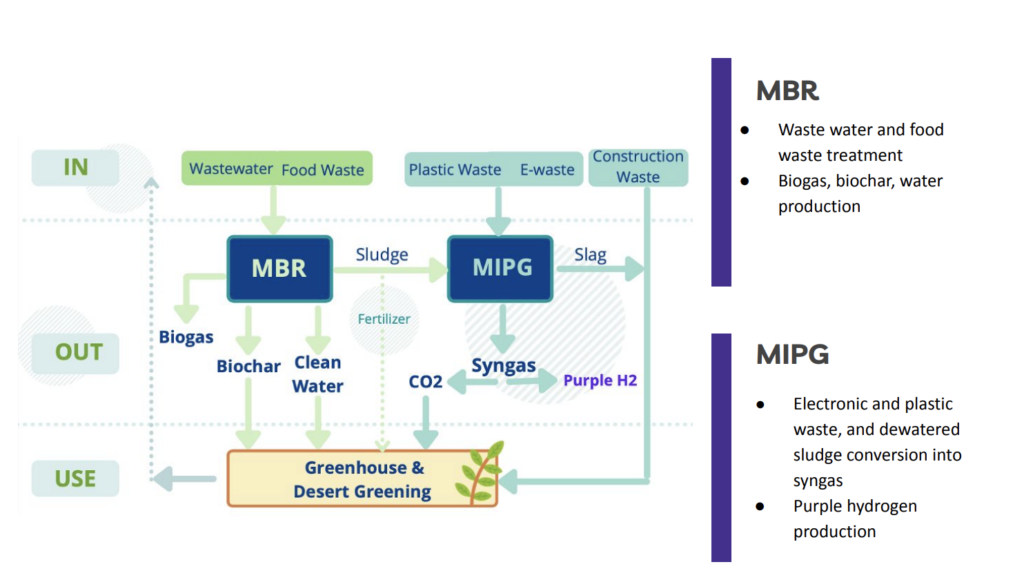
Plasma gasification is a relatively new technology that turns organic materials into synthesis gas, or syngas for short, which is a combination of hydrogen and carbon monoxide. A plasma gasifier makes use of a plasma torch to produce plasma, which is the fourth state of matter, at average temperatures of about 5000 degrees Celsius. Such high temperatures enable the gasifier to turn all kinds of organic wastes, including plastics, biomass, hazardous biological materials, petroleum waste, tires, etc. into syngas, without the need to sort waste into different components such as in regular waste-to-energy plants, such as incinerators. The microwave-induced plasma gasifier is a newer and more energy-efficient version of plasma gasifiers in which the plasma is generated using a microwave source, such as magnetrons (similar to those found in microwave ovens) and solid-state microwave sources (used in cellular communications and radar). The syngas produced by MIPG is clean and energy rich.
In this project, the MIPG will be used to turn plastic wastes, e-wastes, some food wastes, and other municipal solid wastes (MSW) into syngas. Moreover, the semi-permeable membrane filters used in the MBR (as well as reverse osmosis desalination plants) which are made of synthetic polymers can also be sent to the MIPG at the end of their service life to be turned into syngas. Some of the syngas produced by MIPG can be utilized for electricity generation (for powering the plasma torch or feeding into the grid) while the remaining can be used for extracting purple hydrogen.
Purple hydrogen is defined as hydrogen produced using plasma technology and the purple color was chosen in honor of NYU. The purple hydrogen feeds into the Hydrogen Economy, helping the UAE and Switzerland, achieve leadership in producing low-cost sustainable hydrogen.
The carbon dioxide produced by the combustion of syngas will be captured and fed into greenhouses for enhanced crop production and carbon sequestration (as the plants lock away the carbon in the carbohydrates and cellulose). A solid slag composed of the metals and silica in the waste feedstock is left over after gasification at the bottom of the MIPG plant, and this hard glassy rock-like substance can be blended into concrete for construction purposes. Thus, with MIPG, no waste goes unused, and all kinds of waste can be recycled in the same plant.
The Membrane Bio-reactor is a well-established technology that produces clean water, compost, and biogas from the wastewater sorted food waste and sewage. The clean water obtained by filtration through semi-permeable membranes can be extensively utilized in agriculture and desert greening for irrigation purposes. The type of MBR specified in this proposal is the Anaerobic MBR (AnMBR) which allows for energy recovery by producing biogas from the biological waste feedstock. The biogas can be used for electricity generation which will be utilized for powering plant processes or fed back into the grid, while the carbon dioxide captured after the combustion will be fed into greenhouses for enhanced plant growth. The waste stream from the AnMBR process is an indigestible biomass sludge that can serve as a natural fertilizer for boosting agricultural production rates.
This solid biomass from the MBR will be mixed with Biochar and desert sand to regenerate the soil and make the desert fertile. Biochar is a type of charcoal produced from plant waste and waste wood and is used for soil enhancement, while also serving as carbon sequestration.
For greening the desert, the construction waste along with the solid slag from the MIPG will be used to create compound walls in the desert which help hold down the desert sand from being blown away by the wind and to prevent the formation of sand dunes. Biochar and the fertilizer from the MBR are mixed into the desert sand within the compounds and then irrigated with recycled water. Regenerative agricultural techniques (also known as permaculture) are then made use of to grow trees and plants within these compounds in the desert. Over a period of months, the desert can be greened in a sustainable and regenerative manner, which also achieves carbon capture and sequestration.
Thus, the waste management technologies that we are proposing turn all types of waste into reusable resources and renewable energy, thus perfectly fitting into the circular economy model, forming a systematic approach to economic development designed to benefit business, society, the future generations of the nation and the environment. The implementation of the project will expand the employment and entrepreneurship opportunities in the UAE, and reduce its reliance on food imports, subsequently reducing shipping pollution and energy consumption. Moreover, this solution will enable the nation to reach not just zero-carbon emissions, but a negative carbon emissions through carbon capture and sequestration.
Another requirement of the SMECEYI competition is youth empowerment. Our project uses five key avenues: education, start-ups, social media, public messaging, and volunteering opportunities to activate the youth’s full potential.
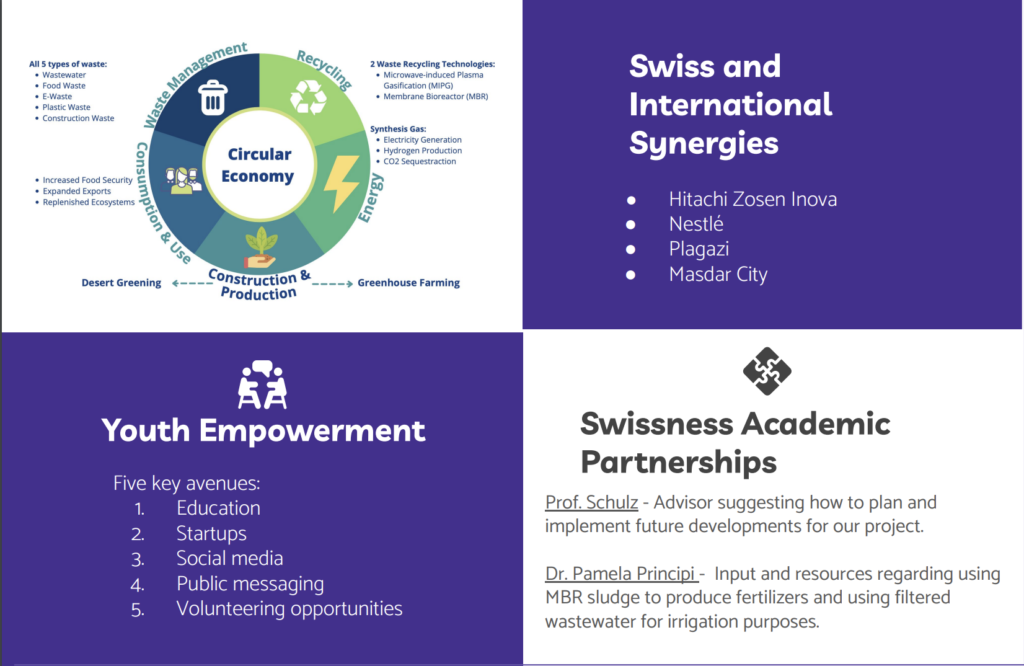
NYUAD’s diverse and multidisciplinary Team Green Arabia will be actively involved in the project development continuing from the summer into the Fall 2021 semester to present their project at the Swiss Pavilion at Expo 2020 Dubai.
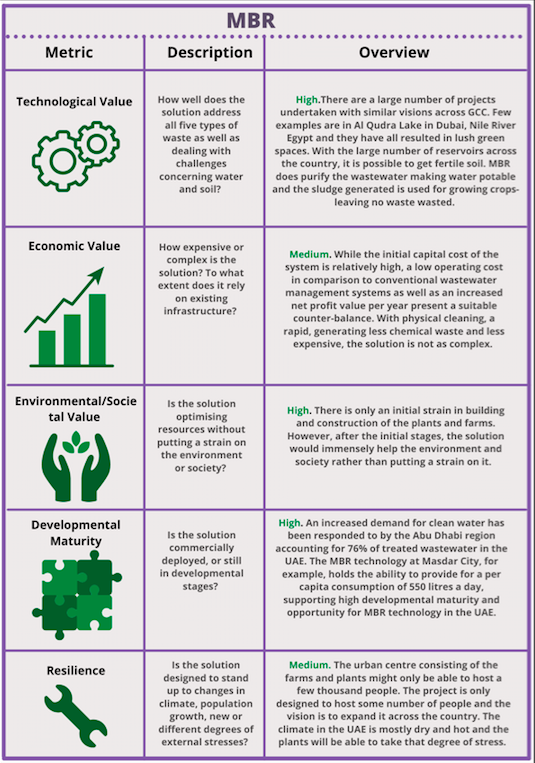
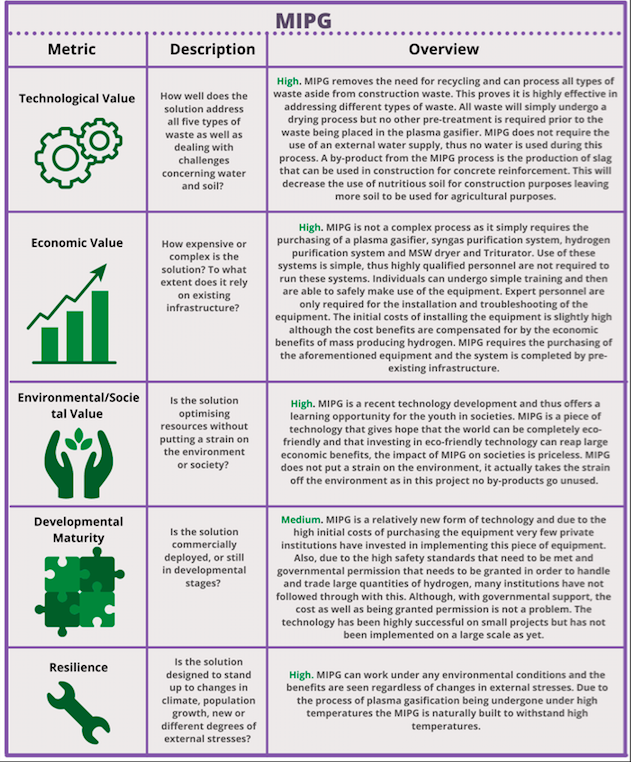
See more here.